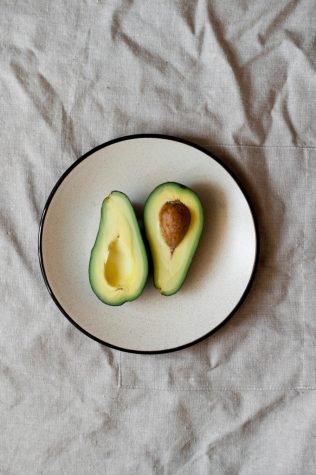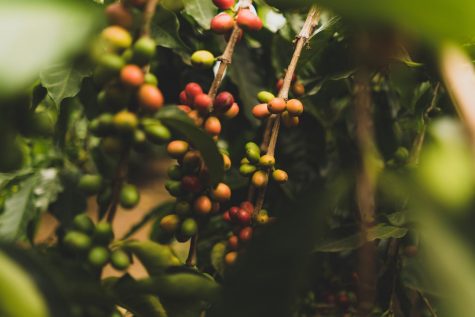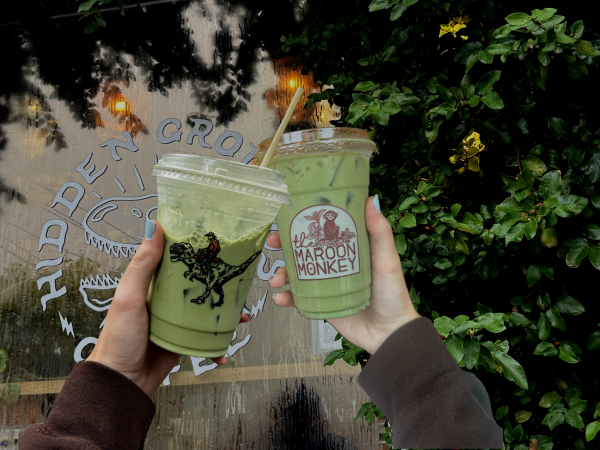Your food isn’t as sustainable as you thought—how can you do better?
From the heavy carbon and water footprints to the vast amount of deforestation, the food industry has left quite a negative impression on the environment. The irresponsibilities of the industry have resulted in large-scale environmental degradation due to food production, processing, and distribution. With the food industry relying on the environment to produce the food, it is impossible to separate the two.
While separating the two may be out of the question, as consumers we can make more eco-conscious decisions that are less harmful to the environment. This can be done by opting for more sustainable alternatives to some of your favorite foods that aren’t as eco-friendly as you may have thought. Let’s take a look at a few of those foods and some alternatives.

Avocado
The increased demand of avocados has resulted in the need for farmers to expand their orchards, resulting in environmental issues such as deforestation and increased greenhouse gas emissions. A study conducted by Carbon Footprint Ltd estimates two small avocados in a packet have a carbon footprint 846.36 grams, almost double the size of 2.2 pounds of bananas (480g CO2). This is in part due to the long distances the fruit travels from Central and South America to reach the Global North.
Avocados also requires large amounts of water. During irrigation, the near-horizontal roots of avocado trees makes the flow through preferential infiltration less favorable and causes water to have difficulty seeping into the subsoil—14 times less compared to the average pine tree. On average, about 528 gallons of water are needed to produce about 2.2 pounds of avocados.
How we can do better: Looking for something to spread on your toast? Try nut butters like cashew butter and peanut butter. Another great option is mashed banana because it that provides consumers with many important nutrients including powerful antioxidants. For those who like to use avocados as a dip, hummus is a tasty alternative packed with vitamins and minerals.

Photo by Jocelyn Morales on Unsplash
Almonds
For almonds to grow, bees must pollinate each blossom. In fact, almond orchards are the first natural food source of the year for many bees after their winter hibernation. However, an increase in pesticides being used on almond groves are causing a decline in bee populations. The USDA Pesticide Data Program has found nine different pesticide residues in almonds—and four are toxic to honey bees. Certified organic almonds are grown without pesticides, which makes them more bee-friendly, but there are few certified plots in California.
Most of the world’s almonds come from drought-stricken California, so this means heavy amounts of water are required to grow these nuts. To produce just 16 almonds requires an estimated 15.3 gallons of water. Groundwater reserves are near a minimum in California. With some farmers diverting dwindling groundwater reserves to their almond orchards, the situation does not look hopeful.
How we can do better: Opting for organic almonds and almond milks, which use no pesticides and sometimes require less water, is a great store-bought option for consumers. For those who drink almond milk, you can also try to make your own almond milk with organic almonds. Otherwise, cashew and oat milk are similar-tasting alternatives for those who want to ditch almonds all together.

Photo by Charisse Kenion on Unsplash
Chocolate
Ghana and the Ivory Coast is where 60% of the world’s chocolate supply comes from, and it has seen some of the greatest impacts from this sweet treat. According to Mighty Earth’s report, Ghana has lost 10% of its entire tree cover between 2001 and 2014; approximately one quarter of that deforestation has been linked to the chocolate industry. As for the Ivory Coast, the country has lost seven of its 23 protected areas to cocoa. This habitat loss has resulted in chimpanzees becoming critically endangered with many other species not far from it.
Chocolate has one of the largest water footprints of any crop requiring an astounding 450 gallons of water to make a single 3.5-ounce (100-gram) chocolate bar. This equates to roughly ten bathtubs of water. The ideal climate for cocoa plants occurs within the 10-degree latitude band around the equator, so most of this water comes from the heavy rainfall typical for these latitudes.
How we can do better: To help conquer your chocolate cravings, try reaching for one of your favorite fruits instead. Most fruits are high in antioxidants, fiber, health-promoting phytonutrients, potassium and vitamin C. Not only is this more sustainable, but it is healthier as well.

Photo by Clint McKoy on Unsplash
Coffee
Coffee beans were once grown under a shaded canopy of trees. However, modern methods have switched away from this traditional method and replaced the canopy with intensive ‘sun cultivation.’ These monoculture farms are associated with high levels of deforestation. This has stripped countless animals, insects, flora and fauna of their homes impacting the biodiversity of these areas. Incidentally, 37 of the 50 countries in the world with the highest deforestation rates are also major coffee producers.
There is a large amount of waste associated with coffee. Separating the beans from the coffee cherries generates enormous volumes of waste in the form of pulp, parchment and residual matter. In 1988, an estimated 547,000 tons of coffee was processed in Central America over a six-month period and produced as much as 1.1 million tons of pulp. This made its way into the local water systems polluting approximately 110,000 cubic meters of water each day.

How we can do better: Matcha tea, chai tea and yerba mate are all great alternatives to coffee that will give you the boost you need to get through your day. Looking for some caffeine-free alternatives? Try chicory coffee or golden milk.

Photo by Nick Karvounis on Unsplash
Meat and Dairy
A 2018 analysis affirmed the meat and dairy industry produces 60% of agriculture’s greenhouse gas emissions. According to the United Nations Food and Agriculture Organization, the livestock sector alone generates 18% of global greenhouse gas emissions which surpasses transportation when comparing Carbon Dioxide equivalencies. Livestock is also responsible for 65% of human-related nitrous oxide and 37% of all human-induced methane.
The meat and dairy industry has also led to heavy deforestation worldwide, particularly in the Amazonian region. Experts have estimated approximately 80% of deforestation in the Amazon is due to cattle ranching. Additionally, the Yale School of Forestry and Environmental Studies has estimated that Brazil alone has 24 to 25 million hectares allocated to soy production—80% of which ends up as animal feed.
How we can do better: Jackfruit, seitan and tempeh are versatile and inexpensive meat alternatives. As for dairy, there are a variety of non-dairy options for purchase in-stores including milk-alternatives such as oat, hazelnut, cashew, soy and hemp.

Photo by Paul Einerhand on Unsplash
Seafood
Approximately 90% of global fisheries are overfished or depleted, and most have become commercially unsustainable. Illegal, unreported, or unregulated fishing accounts for more than 15% of the world’s total annual fisheries output. This loss of marine life is detrimental to marine ecosystems.
Seafood’s carbon footprint can be attributed to the fuel consumption. Many fisherman travel far off-shore in large boats to catch migratory species like tuna. This burns plenty more fuel than traveling short distances to catch local species. Despite this, seafood has a smaller carbon footprint than other animal proteins, on average, because fishing doesn’t require farmland or care of livestock. However, this varies among seafoods since fish and the lengths at which fisherman must go to catch them.
How we can do better: Chickpeas are a tasty alternative that you can use in a variety of mock-seafood recipes including ‘tuna’ salad and ‘crab’ cakes. Tofu is another great alternative that can be cooked to resemble shrimp and fish sticks. If you simply can’t part from seafood, the Environmental Defense Fund has a sustainable fish guide that divides popular species of fish into three categories: Eco-best, Eco-OK and Eco-Worst.
Grains
Humanity depends on three crops for the majority of its nutrients and calories: wheat, rice and maize. However, agriculture requires a vast amount of space and water to supply the world’s population. According to the United Nations Food and Agriculture Organization (FAO) and the United Nations Environment Programme (UNEP), agriculture occupies 38% of the global land surface and is responsible for over 70% of global freshwater consumption. 2.2 pounds of rice alone takes approximately 660 gallons of water to produce.
The fertilizers and pesticides used on farms to help farmers produce favorable yields can be detrimental to wildlife. Exposure to pesticides can be linked to birth defects, cancer, developmental changes, endocrine disruption, kidney and liver damage, neurotoxicity and reproductive effects in a wide range of species. In birds, for example, exposure to specific pesticides can impede singing ability, making it a challenge to attract mates.
How we can do better: Opting for organic grains, which use no pesticides, is a sustainable store-bought alternative for consumers. You can reduce your water footprint by opting for drought-tolerant grains such as einkorn, teff, sorghum and proso millet.










